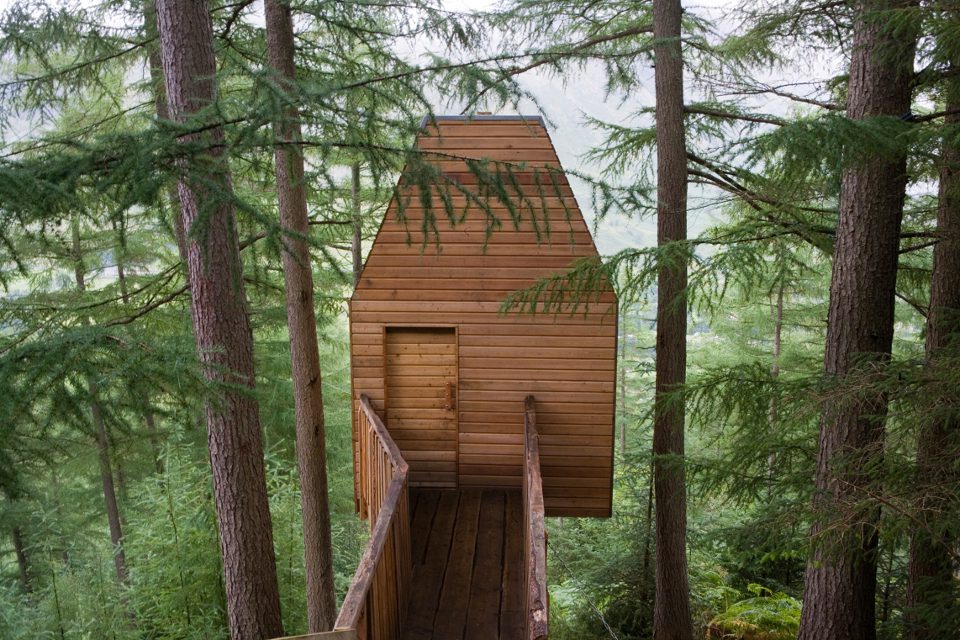Interdisciplinary arts collective, London Fieldworks, was formed in 2000 by artists Bruce Gilchrist and Jo Joelson as a creative platform from which their collaborative research and practice could flourish. Working across installation, sculpture, architecture, film and publishing, London Fieldworks produces work for a range of contexts, from landscapes to galleries, screen and the radio, and in a variety of locations, from remote and rural parts of the world to urban green spaces in the UK. The duo were longlisted in this year’s Aesthetica Art Prize for Remote Performances (2014), a week-long radio art broadcast live from artists’ field station Outlandia in Glen Nevis. We speak to Gilchrist and Joelson about their innovative and performative investigations which lie at the meeting points of culture, technology, nature and ecology.
A: What inspired you to work together and form the London Fieldworks collective?
LF: Our paths crossed professionally as artists involved in performance / live art in the mid 90’s. We realised we had shared interests, which included interrogating the artist-audience dichotomy, and questioning the authenticity of mediated experience, especially experience of place. We became interested in expanding and combining our interests and practice, which at the time was based around performance, digital bio-monitor interfaces and the philosophical and practical aspects of light.
A: How has your practice developed since the collaboration started in 2000?
LF: Our early projects explored fieldwork as artistic practice and involved collaborative ways of working bringing in others from across disciplines. We have continued to explore modes of production and reception of art with our practice developing through expanded notions of multi-media. Projects are research led, often critically situated at the intersection of art, science and technology, which has led to an idea of ecology as a complex inter-working of social, natural, and technological worlds. We continue to work with a broad palette combining collaboration, interdisciplinary and social engagement.
A: Your choice of exhibits expand beyond the gallery, venturing into landscape, screen and radio. In your opinion, how does your range of location affect the work created and how it is perceived?
LF: Working outside the gallery is an important aspect of our practice – it means we can engage with place and people and non-specialist audiences. Our projects have taken place in urban and rural settings and have been informed by fieldwork at remote and rural sites in Brazil, North East Greenland, Northern Norway, Scotland, Southern India and the USA. This range of locations over the years has led to an understanding of ecology as an increasingly complex story linking for instance the most esoteric science with political and industrial entanglements, mixing up the local with the global and the human with the non-human through the enfolding of habitats. We are becoming increasingly aware of the technological interconnections that are exposing finite economic and ecological limits.
A: Can you discuss the Remote Performances project and describe what it is about human engagement with environment that captures your interests?
LF: Remote Performances continued our interest in interrogating the mediation of experience and the site-specific nature of cognition. 20 commissioned artists created work in response to the Glen Nevis landscape and surrounding environs alongside local residents with all kinds of specialisms – the radio-art performances creating a commentary on social fabric, ecology and experience of place. Through our long term engagement with the region we have come to appreciate a dichotomy within the landscape through its function as an area of outstanding natural beauty as well as a resource for society’s raw materials – a schism common to many rural communities.
A: Why are awards such as the Aesthetica Art Prize important for artists today?
LF: Awards endorse the value of art, promote and make artists more visible. Furthermore, where prize money is attached, they crucially help to sustain artists and their work.
A: How do you see your work developing in the future?
LF: Our current work focuses on an oscillatory urban-rural practice leading to questions around the idea of the contemporary remote; a new kind of remoteness related to the proliferation of technology and technologically enabled perception that is just as likely to be found in the inner city backstreet or suburban living room as in some far-flung wilderness.
Find out more www.londonfieldworks.com or see Remote Performances: www.remoteperformances.co.uk
Entries are open for the Aesthetica Art Prize. For further details, visit www.aestheticamagazine.com/art-prize
Follow us on Twitter @AestheticaMag for the latest news in contemporary art and culture.
Credits
1. Outlandia Fieldstation, Glen Nevis, Scotland. London Fieldworks (2010). Photo by London Fieldworks.




